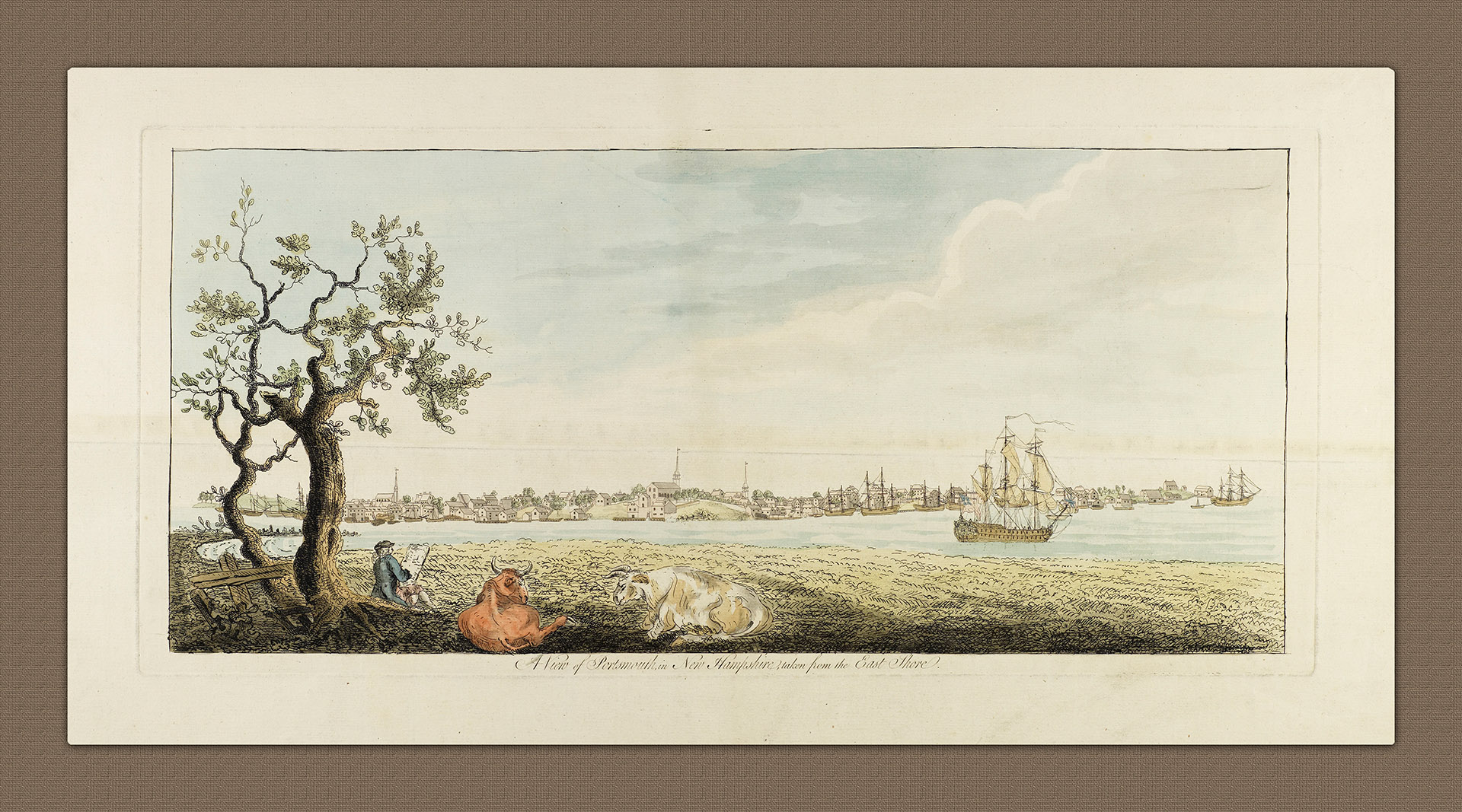A116v - View of Portsmouth in New Hampshire taken from the East Shore
A charming, hand-coloured, view of the important town of Portsmouth under British control prior to the War of Independence.
- 1777
- J. F. W. Des Barres
- h18" x w32.5"
- L
Portsmouth was one of the premier Loyalist towns and commercial centres in 18th century America, and had strong links to other areas of the world.
The composition of his delightful water-colour itself tells a story calm, prosperity and industry through its depiction of the river and the town, with the artist and cows in the foreground and ships on the river representing prosperous trade. It is in fact a second, updated edition of the scene produced by Des Barres for inclusion in the later editions of the Atlantic Neptune.
Timber yards across the river depicts the scale of the Portsmouth's lumber and associated ship building businesses. New Hampshire was run from the town by the Wentworths, an aristocratic family dynasty of appointed Governors who represented the British Kings, George II and George III, between 1717 and 1775.
When political and military change came to New Hampshire, Portsmouth was at the very heart of the revolution. In 1775 Governor John Wentworth II, on discovering a mob pointing a cannon at his Pleasant Street home, decided to abdicate his post and leave the town, finally ended a century-long period of British control.
With Loyalist control a thing of the past, Portsmouth continued as a prosperous commercial center, with the shipyard run by the powerful and influential John Langdon. Within a year of the end of British control Langdon was building ships for the new American Navy. Portsmouth was also, for a time, the home of the celebrated American naval hero John Paul Jones (1747-1792), who found fame as the first well-known naval fighter in the War of Indepencence, as captain of the refitted 42 gun merchant ship 'Bonhomme Richard'.
In one particular action. during an engagement with HMS Seraphis off the coast of England, Jones was reported by his First Lieutenant to have uttered the legendary reply to a quip about the possibility of his surrender made by the British captain: "I have not yet begun to fight!", and later in the day he reportedly stated "I may sink, but I'll be damned if I strike."
- View of Portsmouth in New Hampshire taken from the East Shore


